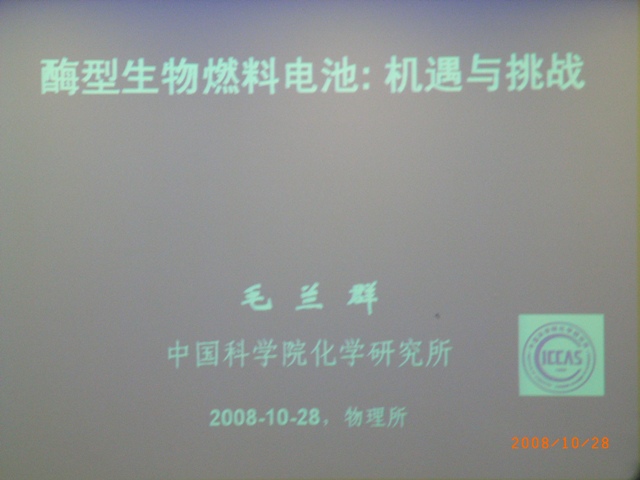光电化学系列讲座(十) 2008-11-26


报告人:毛兰群 中国科学院化学所,北京分子科学国家实验室
毛兰群,中国科学院化学研究所研究员,博士生导师。1998年7月于华东师范大学获博士学位;2006年获得国家杰出青年基金。1998. 9-2000. 5在Bioanalytical Systems日本分公司科研开发部任职;2000. 5-2002. 10在东京工业大学从事博士后研究。长期从事生物电化学和电分析化学研究,近年来致力于与生命过程相关的电化学分析新原理、新方法和新技术的研究,在生物电化学、生物燃料电池以及脑神经电分析化学的研究方面取得了很多有意义的研究成果。主持和参加多项国家自然科学基金和科技部以及科学院重点项目,2005年获中国分析测试协会科学技术二等奖。迄今已在Angew Chem. Int. Ed., Adv. Mater., Anal. Chem. Chem. Commun等重要刊物上发表学术论文70余篇,应邀撰写综述、专论4章节,并应邀作Electrochemistry Communications和American Journal of Biomedical Science刊物的国际编委。
报告题目:Enzymatic Biofuel Cells: Challenges and Opportunities
内容提要:
Enzymatic biofuel cells (BFCs) represent a new kind of energy conversion technology distinct from conventional fuel cells such as H2/O2 and methanol/O2 fuel cells. It can operate under moderate conditions and possess prospective applications as in vivo power sources for implantable electronic devices such as biosensors and pacemakers in human body. Our strategies to development of new kinds of enzymatic BFCs are essentially based on carbon nanotubes (CNTs). To this end, we have successfully realized the direct electron transfer of blue multi-copper oxidases (e.g., bilirubin oxidase) and thus developed multi-copper oxidases-based biocathodes for the reduction of O2 with a low over-potential. By utilizing the interactions between CNTs and redox-active dyes, we prepared new kinds of nanocomposites with excellent electrocatalytic activities toward the oxidation of NADH. Based on this, we have successfully developed dehydrogenase-based bioanodes for the oxidation of biofuels such as glucose and ethanol with a high current density and a low over-potential. By assembling the as-prepared bioanodes and biocathodes, several kinds of BFCs with glucose and ethanol as the biofuels have been developed and their performances in aqueous media and human serum were investigated. We are currently preparing miniaturized BFCs with tissue-implantable carbon fiber microelectrodes and further evaluating the performance and possibility of BFCs as future in vivo power sources.
